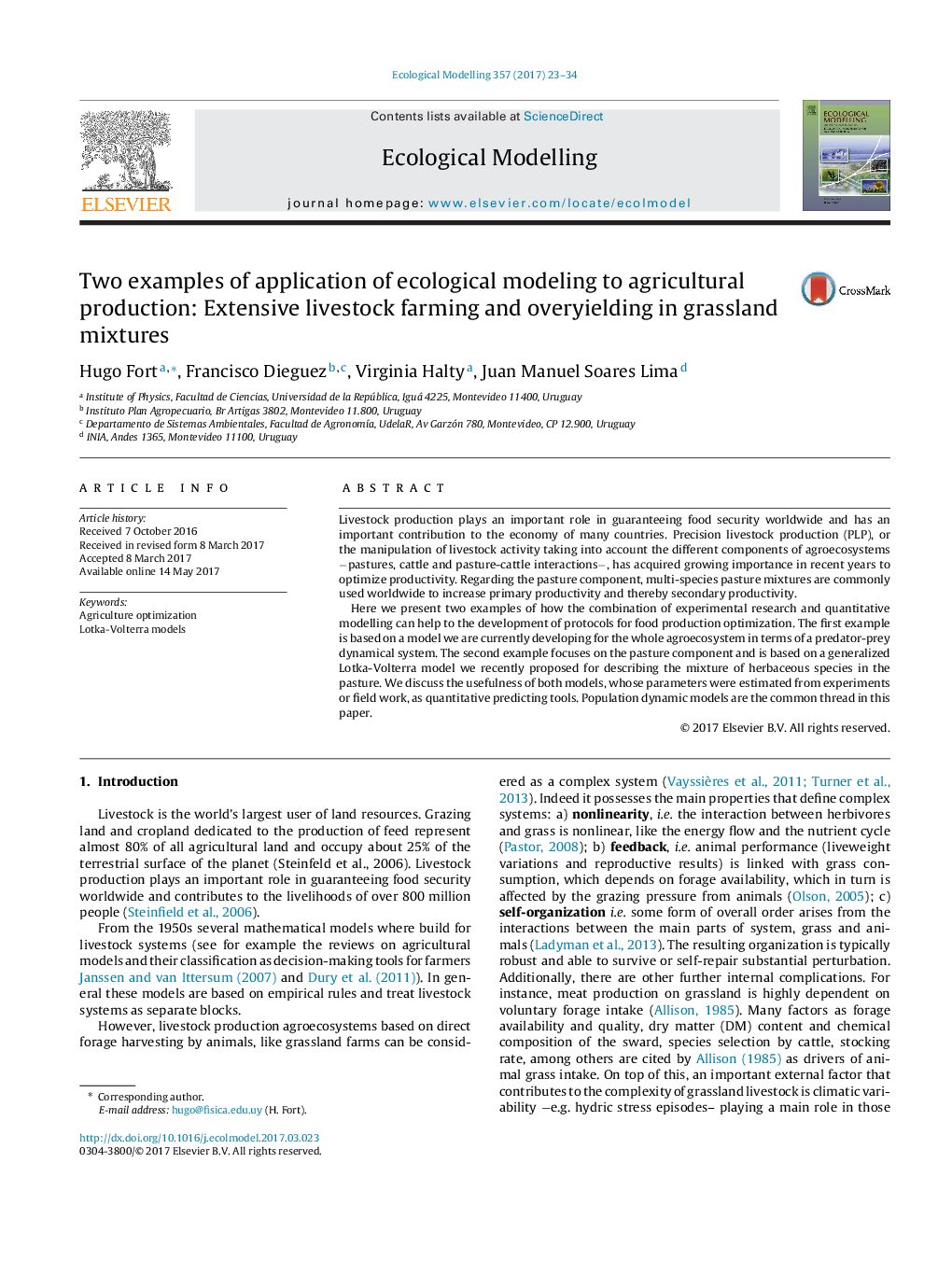| Article ID | Journal | Published Year | Pages | File Type |
|---|---|---|---|---|
| 5742095 | Ecological Modelling | 2017 | 12 Pages |
â¢Experiments + modelling to develop protocols for food production optimization.â¢Parsimonious approach favoring minimal sufficient models (min nro of parameters).â¢A model for the whole agroecosystem as a predator-prey dynamical system: PPGL.â¢A model for artificial pastures in terms of generalized interactions: GLV.â¢Both models correctly reproduce the empirical data.
Livestock production plays an important role in guaranteeing food security worldwide and has an important contribution to the economy of many countries. Precision livestock production (PLP), or the manipulation of livestock activity taking into account the different components of agroecosystems âpastures, cattle and pasture-cattle interactionsâ, has acquired growing importance in recent years to optimize productivity. Regarding the pasture component, multi-species pasture mixtures are commonly used worldwide to increase primary productivity and thereby secondary productivity.Here we present two examples of how the combination of experimental research and quantitative modelling can help to the development of protocols for food production optimization. The first example is based on a model we are currently developing for the whole agroecosystem in terms of a predator-prey dynamical system. The second example focuses on the pasture component and is based on a generalized Lotka-Volterra model we recently proposed for describing the mixture of herbaceous species in the pasture. We discuss the usefulness of both models, whose parameters were estimated from experiments or field work, as quantitative predicting tools. Population dynamic models are the common thread in this paper.
